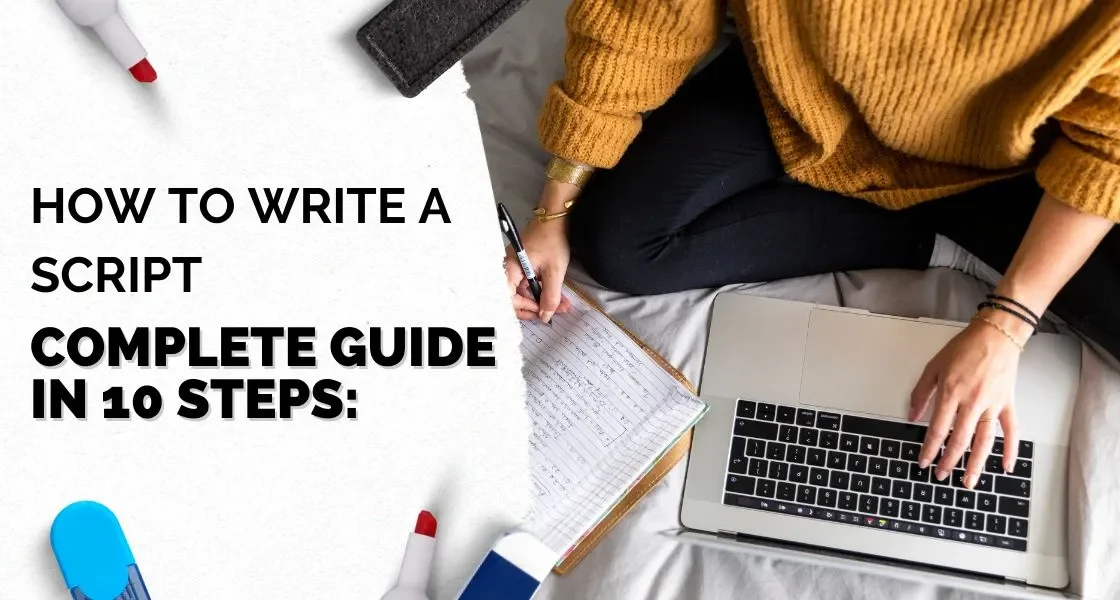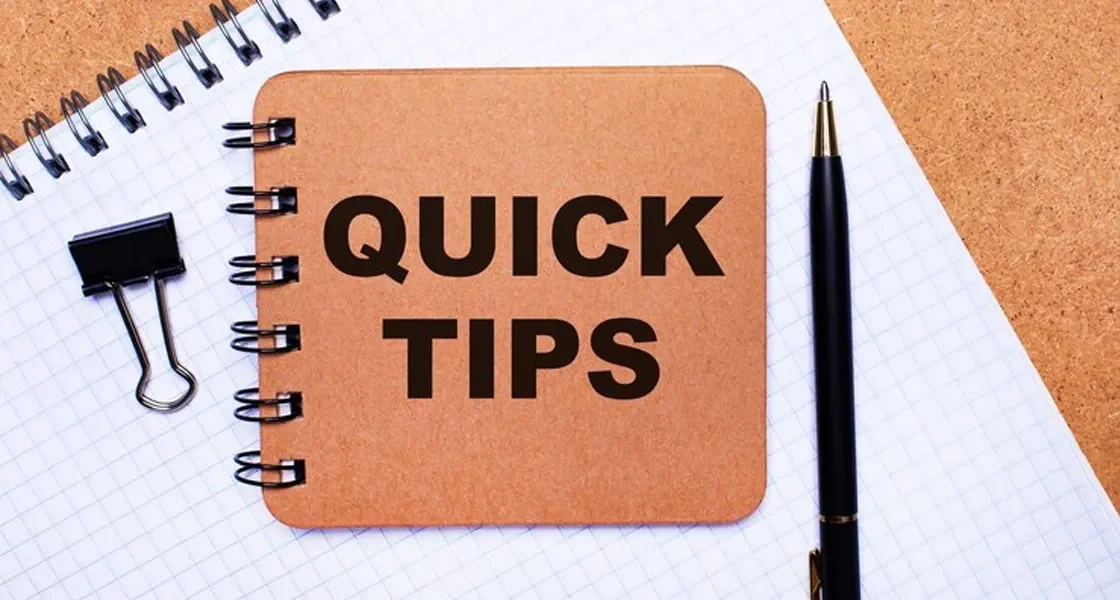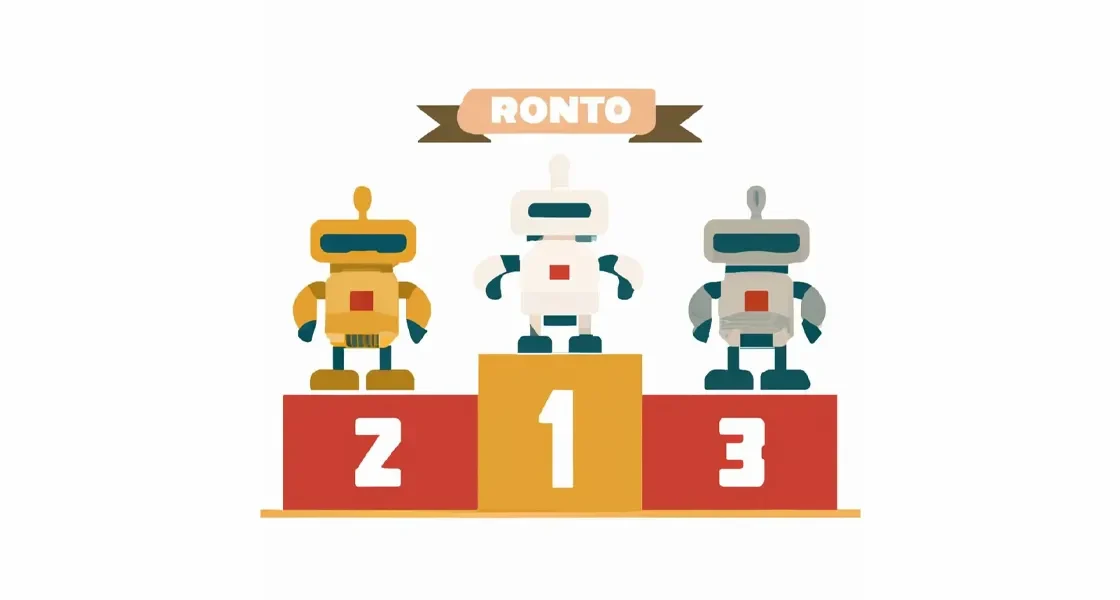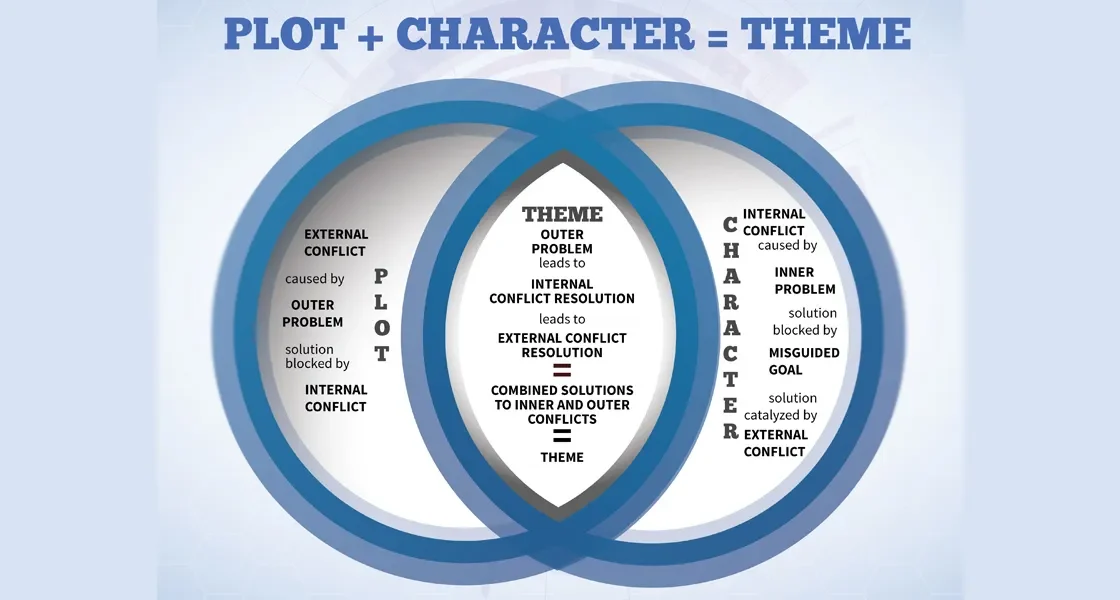
Table of Contents
ToggleComprehensive Guide On How To Write a Script:
What is scriptwriting?
Could you take a deep dive to know what it states?
Two things will always remain irreversible: “ Time and First Impressions.”
And we never got any second chance to make the first impression ever.
Here, we got a famous quote by Dennis Farina;
“First impressions are important when you pick up a script.”
Alfred Hitchcock states another quote;
“To make a fine film, you need three things: a great script, a great script, and a great script.”
But how is an excellent script formatted and written?
Surprisingly, we got a perfect bunch of answers that will help you write a script that will linger in the reader’s mind forever.
Follow the pattern and adapt these rules to captivate the audience; otherwise, a lousy script holds the strength to be your worst heartbreak as well, Alas!
Rules, Tips and Tricks to Grip on a Perfect Script:

- Clear and Precise Logline and Story Concept:
- Conduct Background Research:
- Develop Outline and Characters:
- Play with Your Strengths:
- Write truism free roles:
- Add-on Screenplay Elements:
- Authoritative styles:
- Organize with Synopsis:
- Estimate Length:
- Produce Transition and Plots:
1 Clear and Precise Logline and Story Concept:

It’s easy to say to compact the whole script into a single or two lines, but it is a little tricky to execute on paper.
That’s what logline is.
Compress and imprison the whole script written or imagined into one line or a paragraph that will be able to narrate every bit and corner of the story. As some things around us complete half our faith. Likewise, a logline completes half of the script faith.
Now, it’s time for a perfect story conception.
It is where you can ask yourself questions like what are your character’s goals they want to aim or achieve? Do they have a villainous or heroic spirit? If criminal, then what made them like that?
Work in detail on the location of your script. Work so clearly on the project to give the audience a broader scenario to think beyond your expectations.
Write whatever you want to write; the concept has the freedom to be anything; there can be a flying horse( fantasy) or a doll laughing under the bed( horror), a swimming pool and a gymnasium on the 100th floor of a renown building( health and fitness), or an underground bar and club setup( thriller and suspense).
There is no restriction on writing, but don’t forget to have a hold 0f your genre and writing style. Take care of little matters, and here’s you with the best script and the unexpected results.
2 Conduct Background Research:
- There is no fun drinking soup under the sun in the thrilling summer, not even if you are feeling unwell or morbid, right?
- It’s not easy and even impossible to believe if you write something like “Hiding in a corner, Adam was facing signal problems for his iPhone to text his mother that he is safe when World War II breaks out.” Like, man, for real? iPhone in 1939? Took a heavy dose, right?
- “Liza and Conrad were stargazing on the roof, and after 5 minutes, Liza was found on the road, dead.” haha, okay, wait, did a ghost come and put her there or what? Where is the sense and context?
Every point is missing something, which in the writing world is called “ Background Information or Background Research.”
In the first point, the background research on the weather is missing; it’s fun and exciting to drink soup in the winter breeze under the cold sunshine.
In the second point, the background research on the period is missing; it’s possible that Adam was finding signals to make contact with her mother through wire signals or letters.
In the third point, the background research on the situation is missing; it could be like they were stargazing, and Liza was feeling thirsty, so she went to drink water from the bottle at the end of the roof. Unfortunately, she slipped because the water spilt there.
It might make sense now, right?
3 Develop Outline and Characters:
Outlining is like a pillowcase to a script.
Crafting an outline helps you overcome obstacles in character development, location processing, reaching pinnacles and progressing logically to create that will captivate the producing and direction teams, as there should be a hidden or open moral that lingers in the audience’s minds.
Bring out the logic or assumptions of your script and make it the most engaging and hooking part to engage the audience and reader. Your premise should be logical, brief, and clear and hint towards the main goals, hurdles, barriers, and development.
Most scriptwriters follow the rule of three-act structure, which is not a one-size-fits-all rule but the more prominent one. Dividing the script into the starting, middle and ending parts. Every part defends its circumstances and consequences.
The first part usually includes the main characters, the characters’ setting and development, incidents, exciting features, and the logline. The middle part consists of plots, transitions, confrontations, conflicts, and struggles that personalities must go through. Such a firm conclusion or climax that terrorizes and ends up as the most extensive plot, and the ending part is usually the most pleasing as it concludes the resolutions, work in solving conflicts and overcoming hurdles and then, with a solid reason, wraps up the story in a way that it engages the readers.
The second part adds up the rising actions as well. Constantly develop emotional curves and complexities with the main lead, whether a hero or villain.
4 Play with Your Strengths:

Be comfortable to play with your strengths.
Let them help you create a script that will match your personality.
Let’s not mess it up;
In an easy way, if you are known as a comedian in your friend circle or so good at making jokes, then why not write about some horror-comedy or rom-com rather than trying on science fiction or children’s genre as there is high demand for sitcoms and comedy shows as well and nowadays stand up-comedy shows are elevating their way to skyrocket the talent individuals.
Writing about something that naturally attracts or makes a way to you in any circumstance should be your strength. Flowing with the modernizing industry is okay until it’s not disturbing or pinching you at your lowest.
Psychology has also proven that writers least get writer’s block in the genre they are the most interested in because this is what they love to do, inspiring them to resonate their content further.
Writing in a genre that has nothing to do with your nature will bother you anyway because writing in any genre that you have never met a version of is challenging because this is not something that anyone can learn.
5 Write Truism Free Roles:
This phrase, “cliche-free characters”, sometimes gets misconcepted by some writers and authors.
Truism-free roles don’t mean you will never use the role of husband, wife, or daughter again because you have used it before in any other script. If you do not use these roles, then what is a soap drama or even a feature film?
Truism-free roles mean if you have written in a mystery genre, then if you have added a thief or, more exclusively, “most wanted thief ”, then whatever you do with it, whether he turns out to be the prince of that state too or caught out to be a secret agent of a rival country.
Then don’t try to do the same with your following script because it will somehow make you lose your charm.
6 Add-On Screenplay Elements:
This is the most practical and complicated part of the script. Script writing depends upon many elements and features such as headings, description of every plot, climax, conflict and resolution, transitions, developing characters, main leads, supporting characters, interior and exterior, actions, parentheticals, formatting and structuring, and location evaluation and expansion.
The first part is the scene heading. It is where the one playing the role, the location, and the supporting character are mentioned. It can be further enhanced by adding weather or time management. Then comes the action part, where all the dialogue sessions take place.
For ex:
“Joseph was sitting on his office table and signing the termination paper of the head manager with red eyes and furious expressions.”Then comes all the character names, everyone who will come in this part, whether it’s an office boy, any other employee or the manager.
Then there is the parenthetical part, which shows the extra emotion or how to deliver the dialogue. For ex:
“When signing the papers, he was taking heavy breaths, and flashbacks of good times were roaming around his head.”Then, there will be the dialogue part, usually when the manager enters, and the conversation starts. Lastly, there will be the transitions, which are briefly described in the last heading.
7 Authoritative Styles:

An authoritative style leads to a bit more betterment in enhancing the overall experience. It means that the single lead or the kind of writing or guide will be dominating and commanding rather than pleasing or in a smooth tone.
Authoritative style or presidential scripted characters are mostly dominating, commanding, ruthless, villainous, merciless, cold-blooded and stony-hearted.
There could be various reasons beyond the imagination, for example;
Worst past trauma, loveless environment, psychological complications, witnessed violence and oppression in childhood, injustice, hypercritical commanding nature, sociopaths, lost love, childhood abandonment, fear of failure, fear of death, fear of losing, vindictive nature, greed, evil mindset, ignorance, violation, and many many more.
Let’s roam around the perfect cases:
“The Godfather" by Mario Puzo
The novel and film script convey an authoritative tone through the character of Don Vito Corleone and his family’s domination in the organized crime world.
"All the King's Men" by Robert Penn Warren
This novel is not about a president but explores the rise and fall of a charismatic and authoritative politician resembling a presidential figure.
“A Few Good Men" by Aaron Sorkin:
Aaron Sorkin’s writing often features authoritative and commanding characters. This play mainly revolves around a military courtroom drama with intense confrontations.
8 Organize With Synopsis:
Script or screenplay synopsis is a one-page document of brief yet precise detailing of the whole script, including the main points, major plots, character development, character targets, distinguishing between villain and hero, and the reason for each.
Its primary utilization is as a tool to convince the production or the direction team that it’s the best for them, or it can be used to persuade them to read the whole script as well.
Mostly, the agents, directors, producers and other executives have busy schedules, and therefore, they don’t have enough time or interest in reading every script 100 pages regularly.
As a well-developed and reputative writer, chances of writing a synopsis decrease occasionally, but as an entry-level writer, it’s better to target with a synopsis.
Writing a synopsis doesn’t mean writing all the details in just a paragraph to cover everything, but it should include a header or title and the logline in the summary to hint at what the story is all about.
Keep it as short and as clear as you can. Let your material and detailing speak more than the words. Focus on significant plots and main characters as a one-page deadline is a very short time to describe every point extensively.
Make your genre a centre of attention. Use language, styles, guides, and accents that perfectly resonate with your script and audience. Craft your synopsis so it doesn’t drop a beat at all. Every plot or sensation has to catch a pitch with the previous and the upcoming scenario, as it will ensure that the script has a central core purpose.
Leaving the end of the story in mystery for a producer or story executive will never work out as it will never help you but will be a clear rejection. Expose what your goals are, and compose a clear conclusion.
9 Estimate Length:
How many pages should my script need to be? What is the estimated length? What is the general size? What is a specific length?
All these questions are valid, and we are here to answer them most easily and appropriately.
First things first, it’s necessary to know which genre and audience you are taking your message to and, secondly, which type of script it is, whether a documentary script, feature film, short film, complex document explanation, product promotional script, novel script, script for any informational video for value insights, comedy show, plays, TV pilots, storyboard, film, etc.
We have gathered some of the most experienced scripts and script writers’ details to make a board for you:
Movie Scripts: Averagely range from 80 to 120 pages for a movie running time 1:40 to 2:15 mins as it said that one-page count-ups as one minute.
Feature films For Festivals: Averagely range from 60 to 100 pages. It’s a perfect estimated length because films for festivals are mostly an hour long, exceptionally 1:30 minutes, but never more than that.
As evenly said by Joseph L. Mankiewicz,
“The only difference between scripts and real life is that a script has to make sense; life doesn’t.”
So, we must make sense of every part when writing a good script, whether it’s length, genre, audience, production, minor details, logline or any other supporting part.
Practice it by understanding this quote from George Clooney;
“It is possible for me to make a bad movie out of a good script, but I can’t make a good movie from a bad script.”
10 Produce Transitions and Plots:

Enhance your script with decorations of transitions and plots.
Transitions are unavoidable. It is the targeting point where the scene flips or the position changes. There could be various reasons for presenting shifts in a film or drama, and there are many different transitions.
A script can have a kickup from a fade-in scenario. It usually comes after the title when the beginning part, even if it’s not a time collapse or any other sudden action moment.
Similarly, the fade-out transitions when the film or play ends. It can fade out to any colour but darker, primarily to black or charcoal grey as a sign of, to be continued…
Transitions also have cut-off scenes to change the setting from one location to another, the changing of position, location displacing, or any incident happening, and it could smash cut, which ends at a place where there is any emotional scene or sentimental person.
Iris-in and iris-out is another important transitional feature where the screen turns black or grey to any specific area rather than the whole screen where if it zooms in, it is iris-in, or if it zooms out, it is iris-out.
Have you ever seen your main lead staring outside from the window of your favourite screenplay, and suddenly, his voice starts playing? It seems like he is talking to himself, but he is still silent. What is this effect?
This is an interesting transitional feature called a match cut when a voice or a scene starts playing, mainly as a flashback or villainous planning. Moreover, jump cuts occur when the camera suddenly changes its position from wide-view to a close-up shot or a person features contracting.
Above all, make transitions attractive to the audience and do not distract them from the central core.